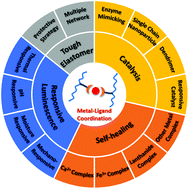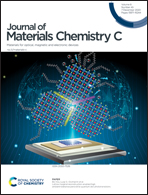Metals in polymers: hybridization enables new functions
Abstract
Adding metals into synthetic polymers is of broad interest to design multifunctional materials, particularly harnessing unique properties and functionalities not found in pure organic polymers. Other than simple emergence of the two, such hybridization often enables synergies to amplify the existing properties and/or create new properties not existing in either component. In this review, we highlight recent examples of metal/polymer hybrids based on either well-defined or ill-defined metal–ligand (M–L) coordination to design multifunctional materials. This review describes how in the hybridization of metal ions and polymers they complement each other synergistically in terms of their optical, mechanical and catalytic functionalities. Synthetic polymers once bound to metals enable stimuli-responsive properties of the metals and control over the luminescence of the metals in response to a change in the environment. As the second coordination sphere, synthetic polymers also enhance the reactivity of metal sites as a means to design bioinspired artificial enzymes. Additionally, the impact of the M–L coordination on the dynamic properties of polymers is summarized in the context of self-healable and tough materials built on the reversible network of interchangeable M–L coordination.

- This article is part of the themed collection: Journal of Materials Chemistry C Recent Review Articles


 Please wait while we load your content...
Please wait while we load your content...
